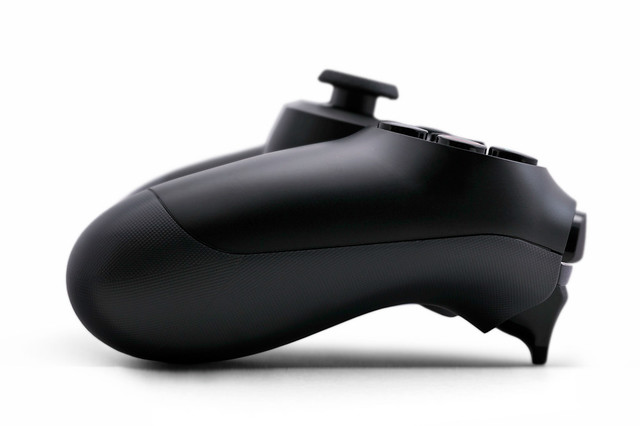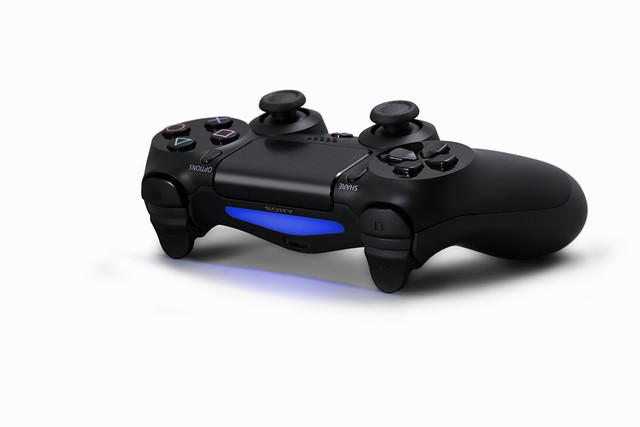
Following its debut at PlayStation’s February 20th event in New York City, DualShock 4 has emerged at E3 in near-final form. Though DualShock 3 has proven to be a capable and dependable wireless controller for years with PlayStation 3, the PS4’s new weapon of choice is a clear improvement across the board. Here are some quick E3 2013 impressions.
For me, DualShock 4’s most impactful new feature is a subtle but shockingly satisfying detail: A glossy cross-hatched texture that wraps around the larger handles. This texture is a delight because it provides a snug, more comfortable grip on the device compared to DualShock 3’s slipperier feel. This is one of those things you’ll need to try for yourself to truly understand, but once you experience it there’s no going back. It’s a delight.

Then there are the redesigned and retuned analog sticks, which now boast a concave surface and slightly stiffer deadzone that makes it easier to maneuver the camera using small, precise movements. The surface is also more tactile, but not so much that it impedes your thumb’s ability to glide around the inner rim as your make subtle adjustments to your aiming reticule in shooters like Blacklight: Retribution. Much like DualShock 4’s new textured grips, the revamped analog sticks are a clear improvement to the classic design sported by DualShock 2 and DualShock 3. It’s no contest.
The directional pad — always a strength on PlayStation controllers — also impressed. It boasts a unified design that reminded me of PS Vita’s well-liked pad, only oversized and sporting a more tactile matte finish. The depth and response of the pad felt just right: Not too clicky, not too mushy; not too deep, not too shallow. Meanwhile, the new Share and Options buttons that have replaced Start and Select were unobtrusively placed and felt satisfyingly click — appropriate for buttons you’ll use less frequently.

Finally, the new R1 and R2 triggers are exactly what you would hope for and expect. Featuring a slightly “hooked” design and less pressure resistance, these puppies are a perfect fit for your itchy trigger finger. I was also pleased to find that DualShock 4’s L1 and L2 buttons feel almost identical to those on PS3. Why fix what ain’t broken, right? It will be interesting to see if developers of PlayStation 4 shooters enable the player to swap the firing buttons between R2 and L2 like they often do on PS3, or if R2 becomes the universal standard going forward.
I didn’t get a chance to try out any titles that made use of DualShock 4’s new lightbar, touch pad, integrated speaker, or the mono earbud that enables online voice chat out of the box. But those will surely come in time. For now, I’m pleased to report that DualShock 4 is hands-down the best, most comfortable console controller I’ve used.